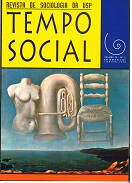A impossível simbolização "daquilo que foi"
DOI:
https://doi.org/10.1590/S0103-20702000000200007Keywords:
Art, war, death, memory, FranceAbstract
The author looks at the French artistic scene after the 2nd World War, from a basic standpoint: due to a series of reasons, it was impossible for the French culture to carry out the "work of mourning" for the victims of Nazism. Based on this hypothesis, this paper analyses works that deal with life, death, violence, memory and oblivion. Because of the impossibility to condense the memory of the horror into rituals or monuments, art after Auschwitz can only formulate issues, such as the reversibility of the roles of the artist and the spectator and the historical necessity of a live memory after the scandalous, asymbolic, unnamable violence.Downloads
Download data is not yet available.
References
BARTHES. (1980) La chambre claire. Note sur la photographie. Paris, Cahiers du Cinéma, Le Seuil/Gallimard.
BOLTANSKI, C. (1998) Entretien avec Béatrice Parent. In: Catalogue de l’exposition “Dernières années”. Musée d’art moderne de la Ville de Paris.
GERZ, Jochen. (1996) La question secrète – le monument vivant de Biron. Arles, Actes Sud.
RICHARD, Lionel. (1995) L’art et la guerre. Les artistes confrontés à la Seconde guerre mondiale. Paris, Flammarion.
Downloads
Published
2000-11-01
Issue
Section
Article
License
Copyright (c) 2015 Tempo Social

This work is licensed under a Creative Commons Attribution-NonCommercial 4.0 International License.
How to Cite
Leenhardt, J. (2000). A impossível simbolização "daquilo que foi" . Tempo Social, 12(2), 75-84. https://doi.org/10.1590/S0103-20702000000200007


